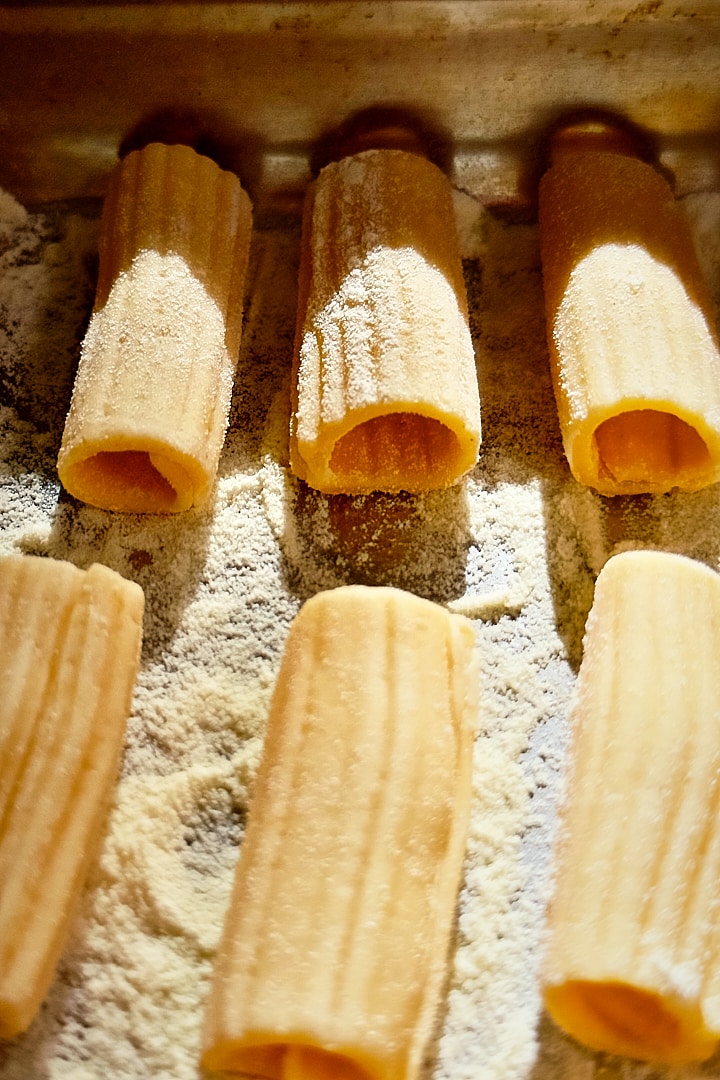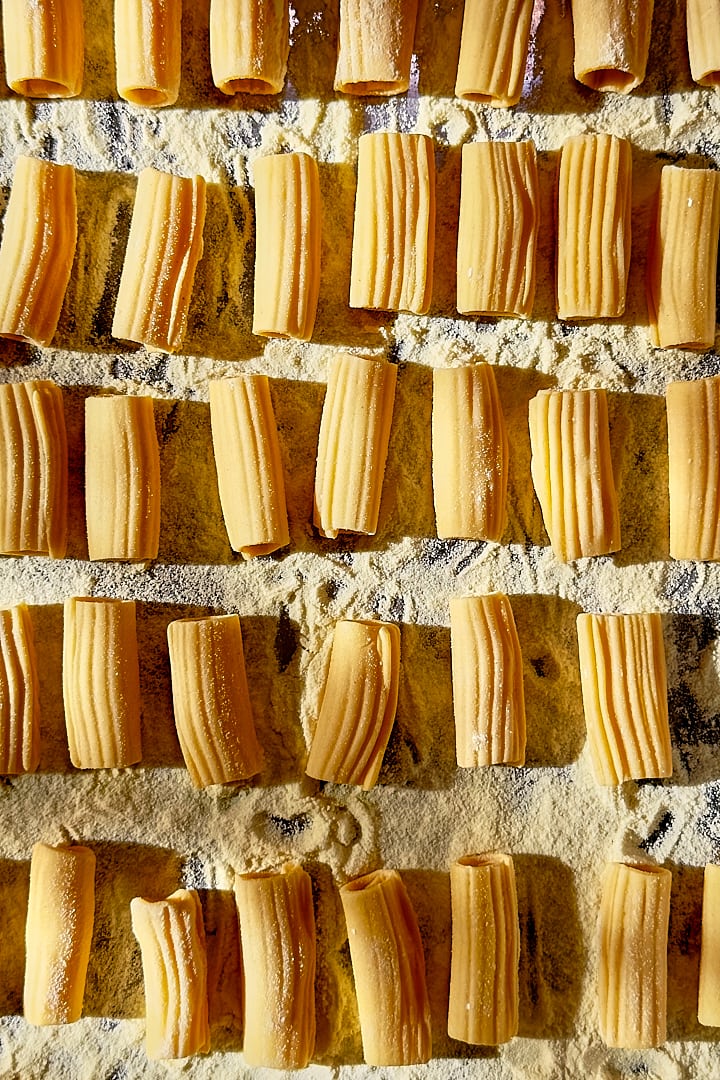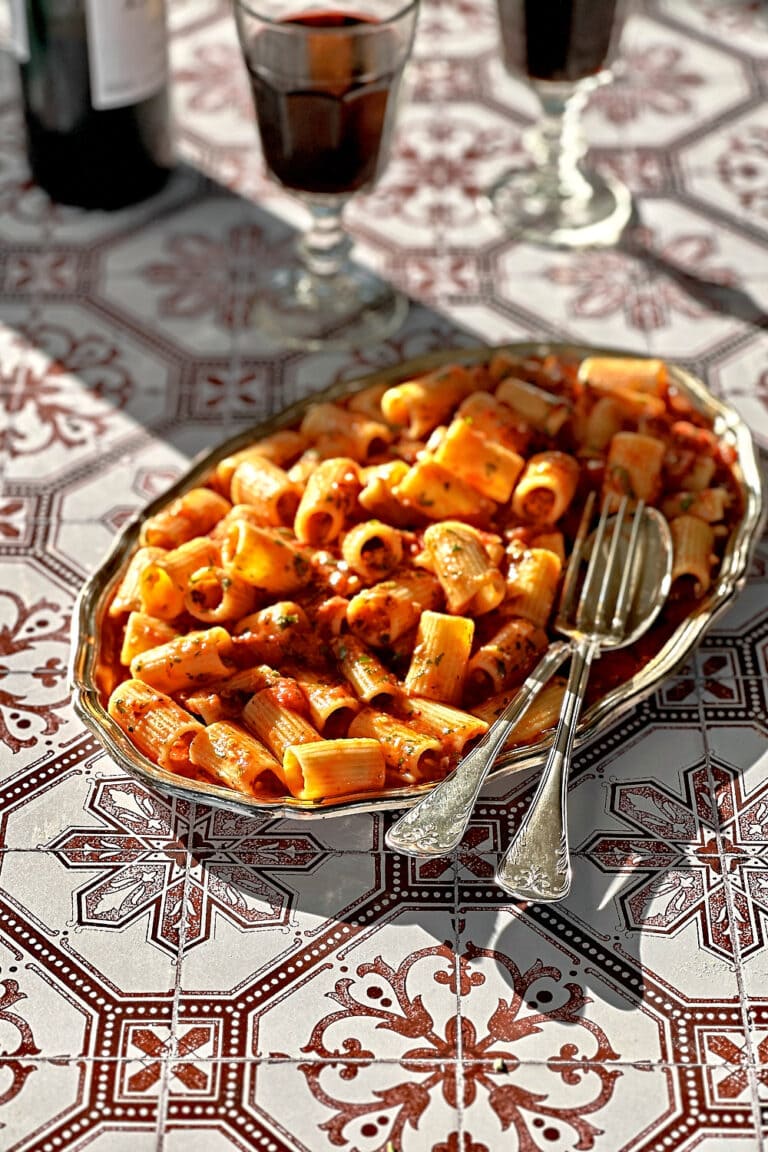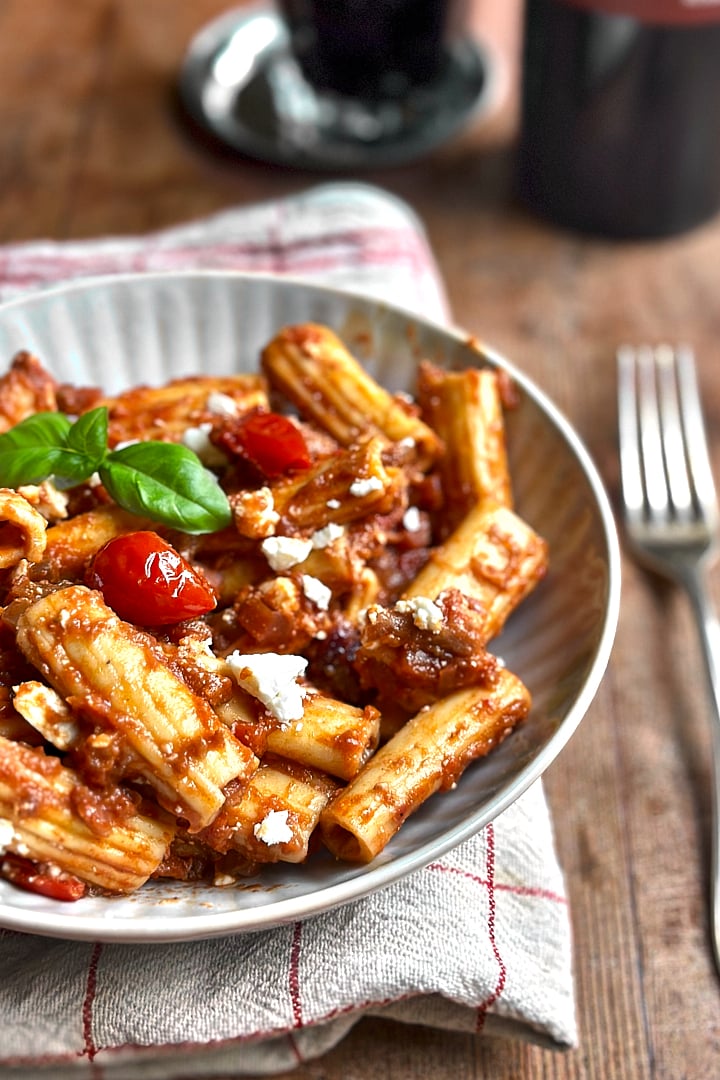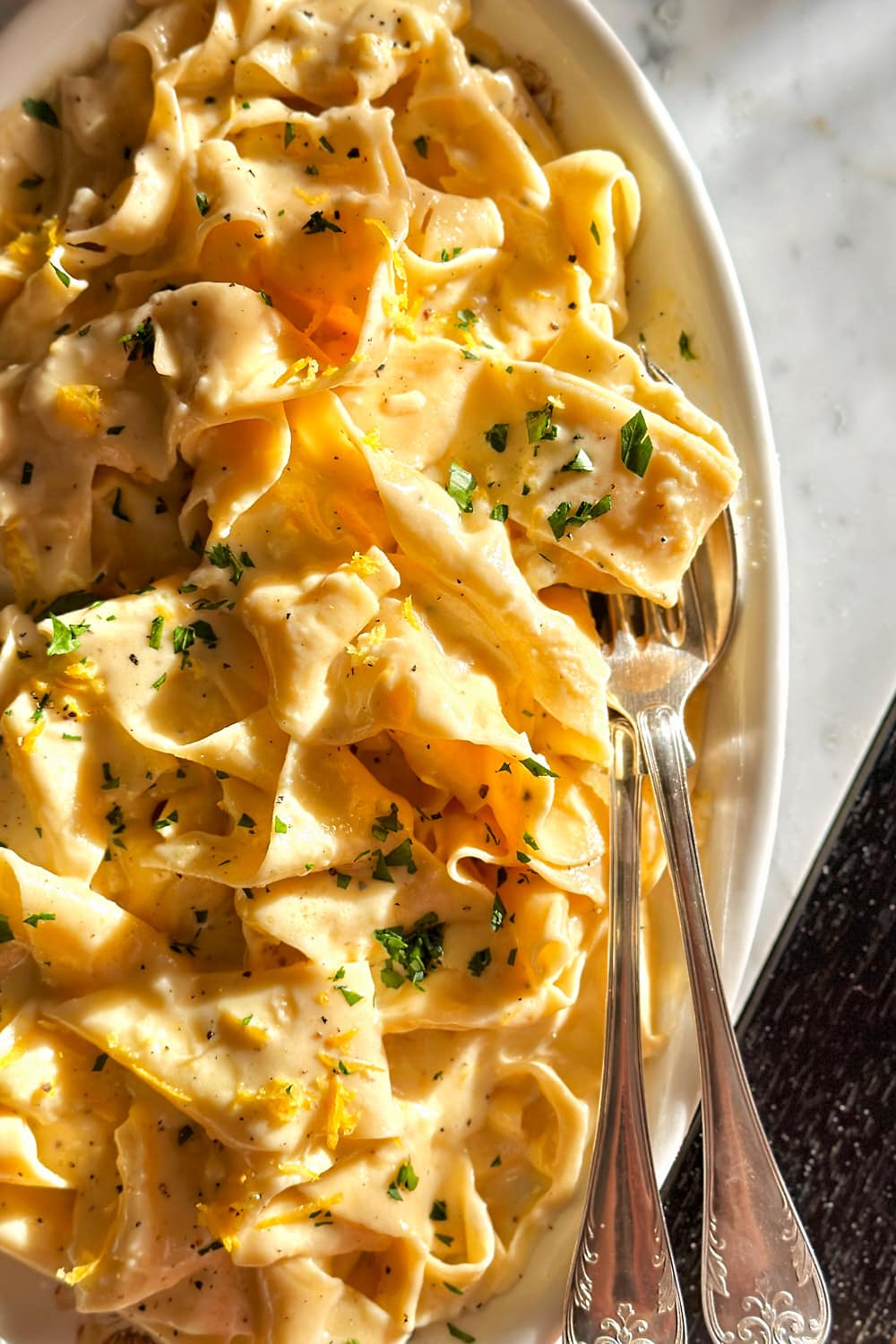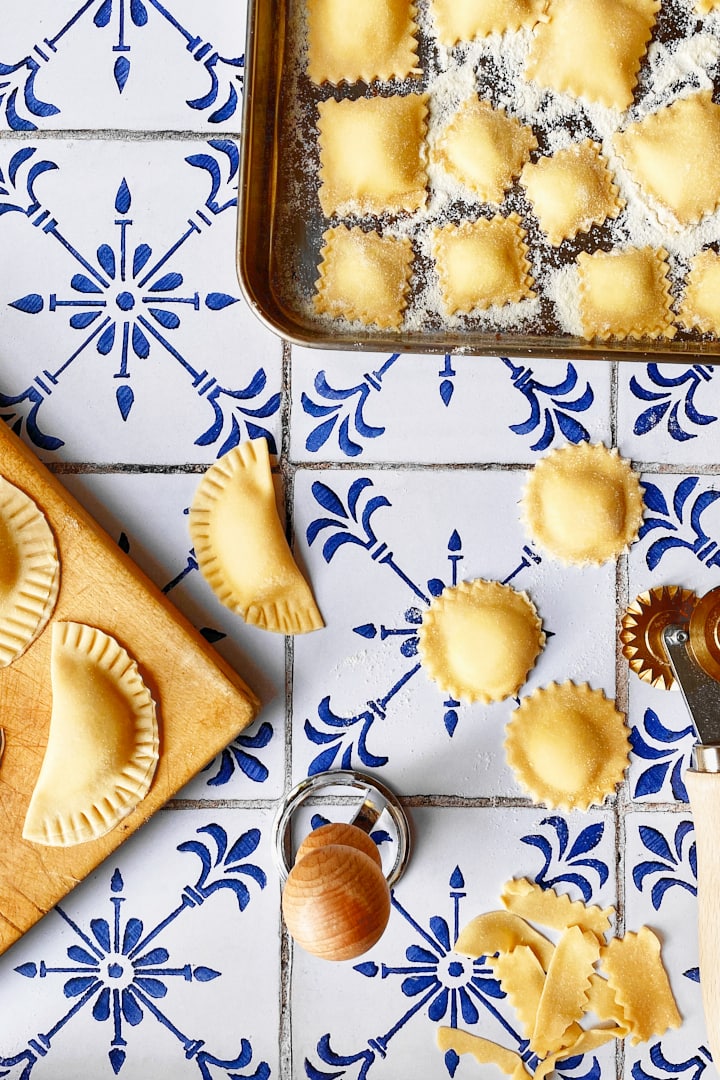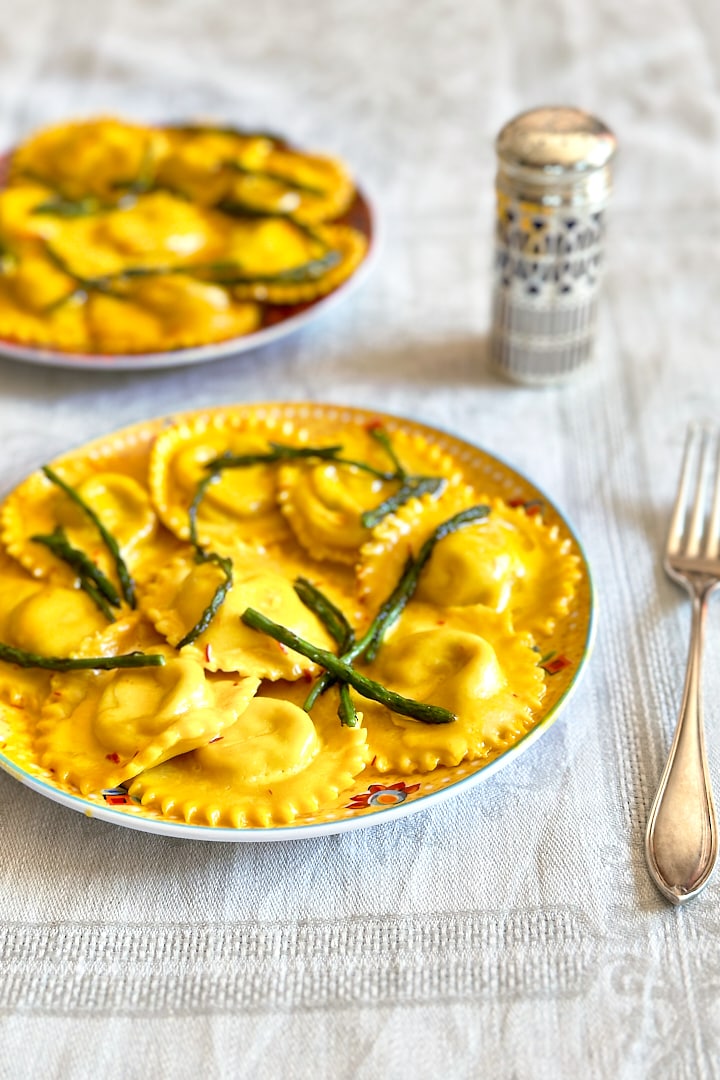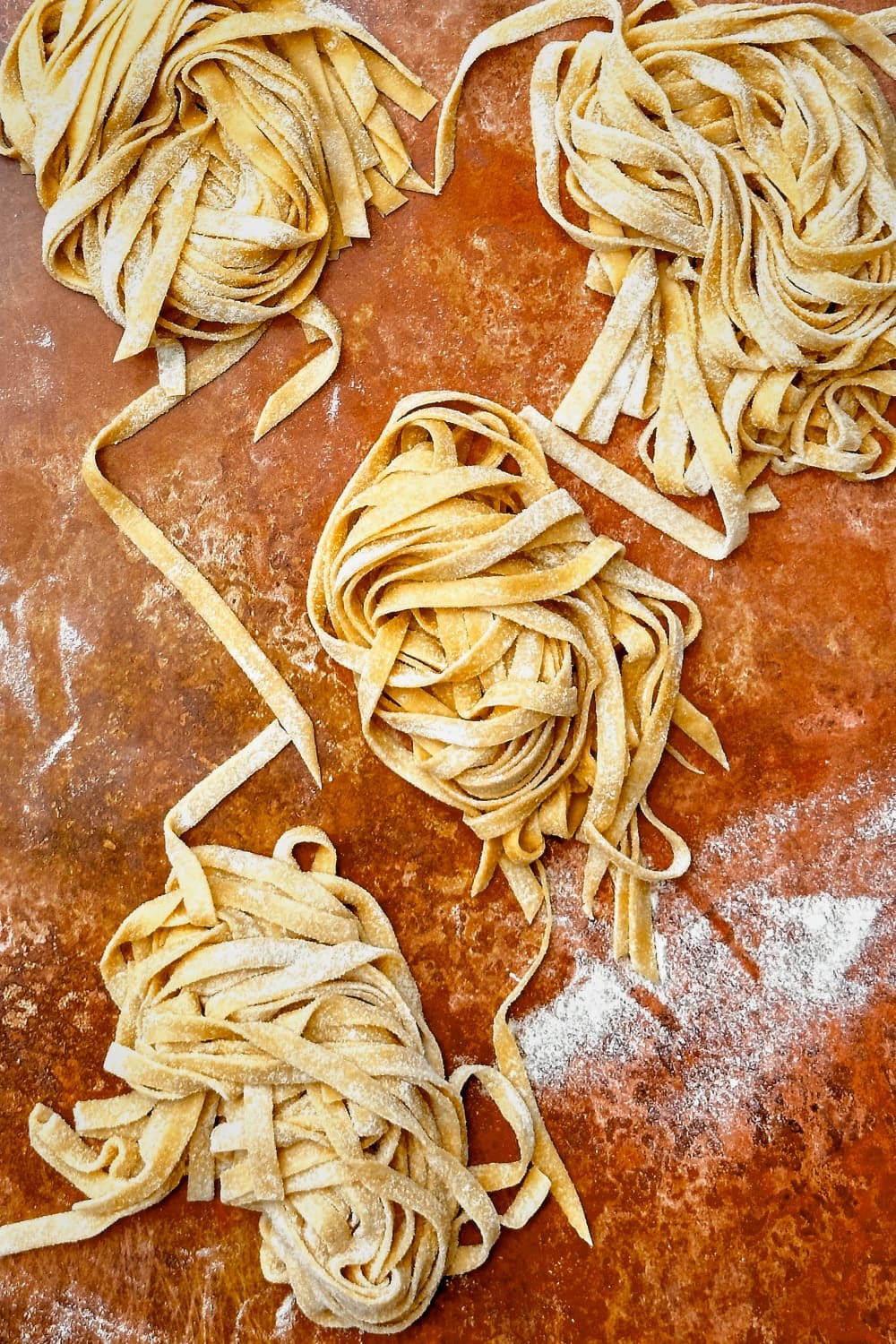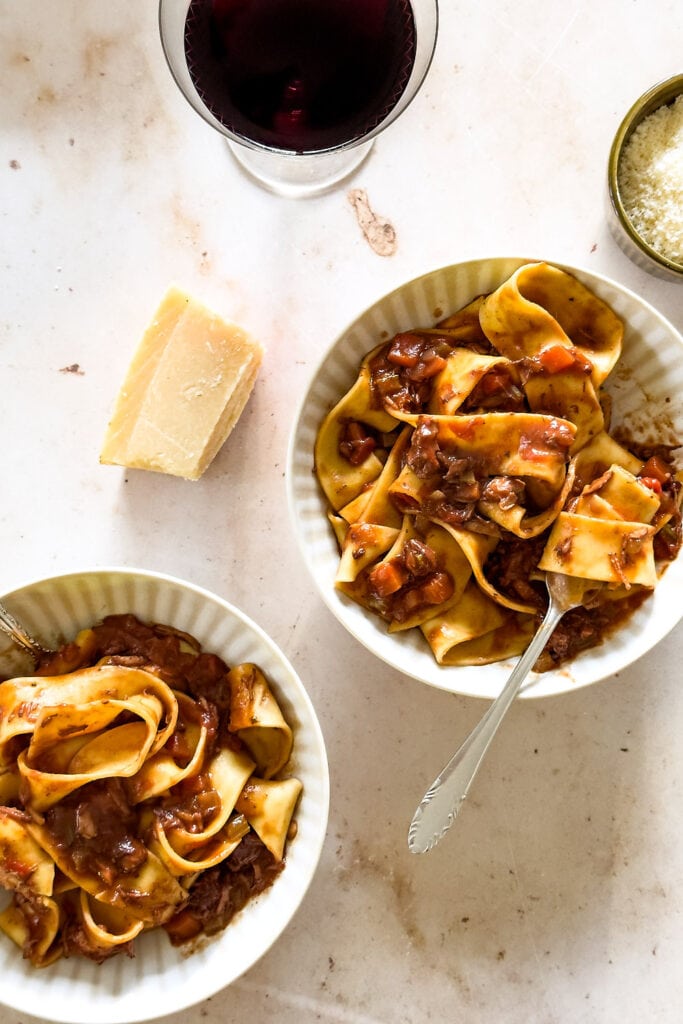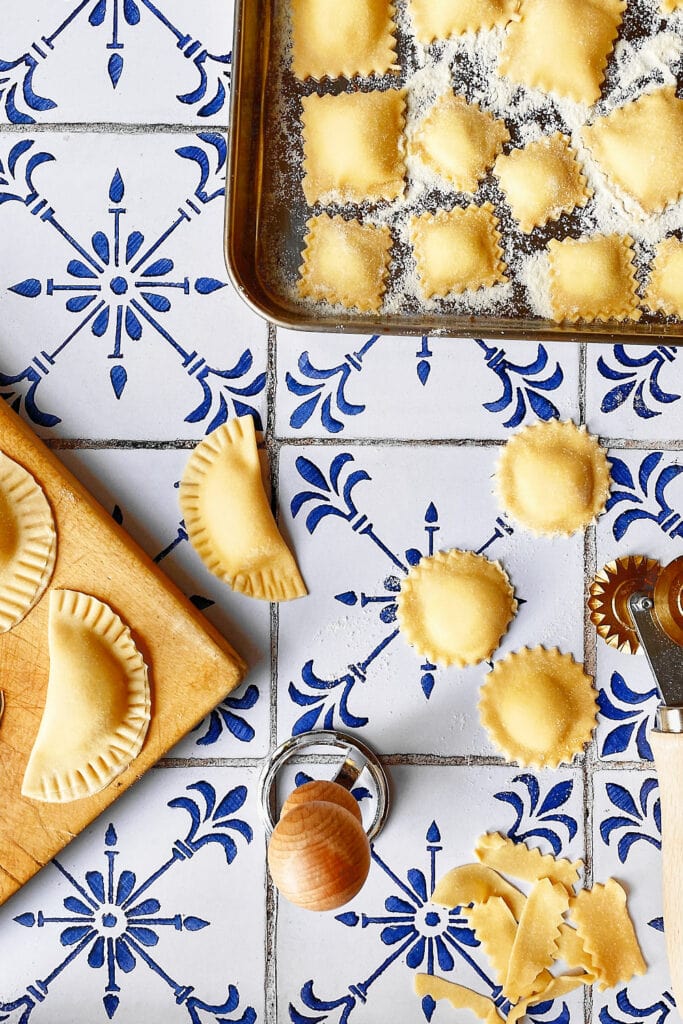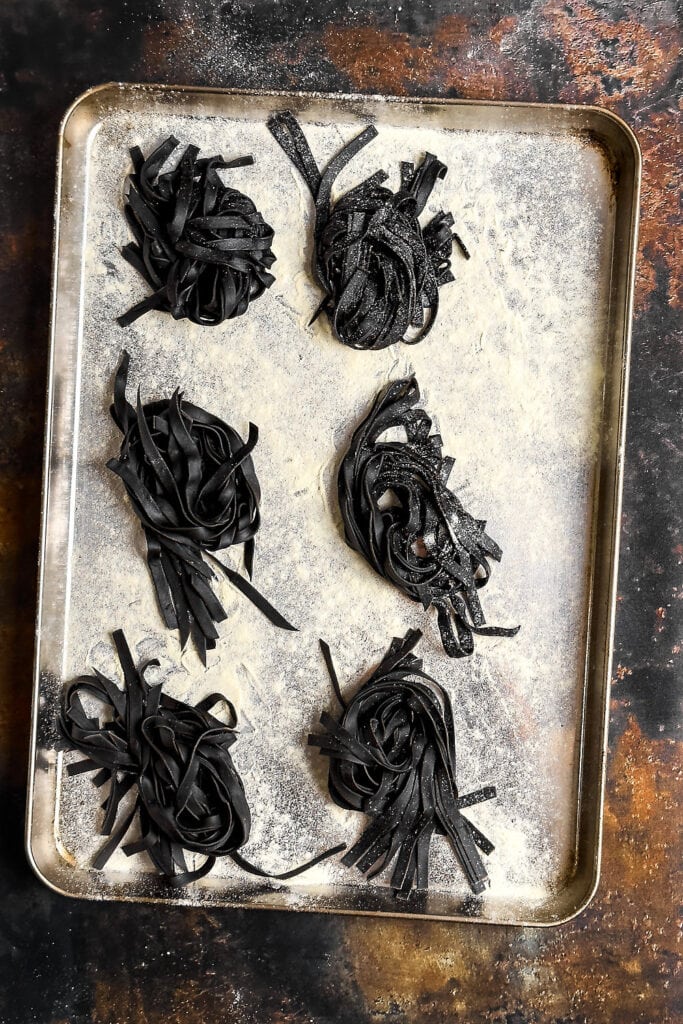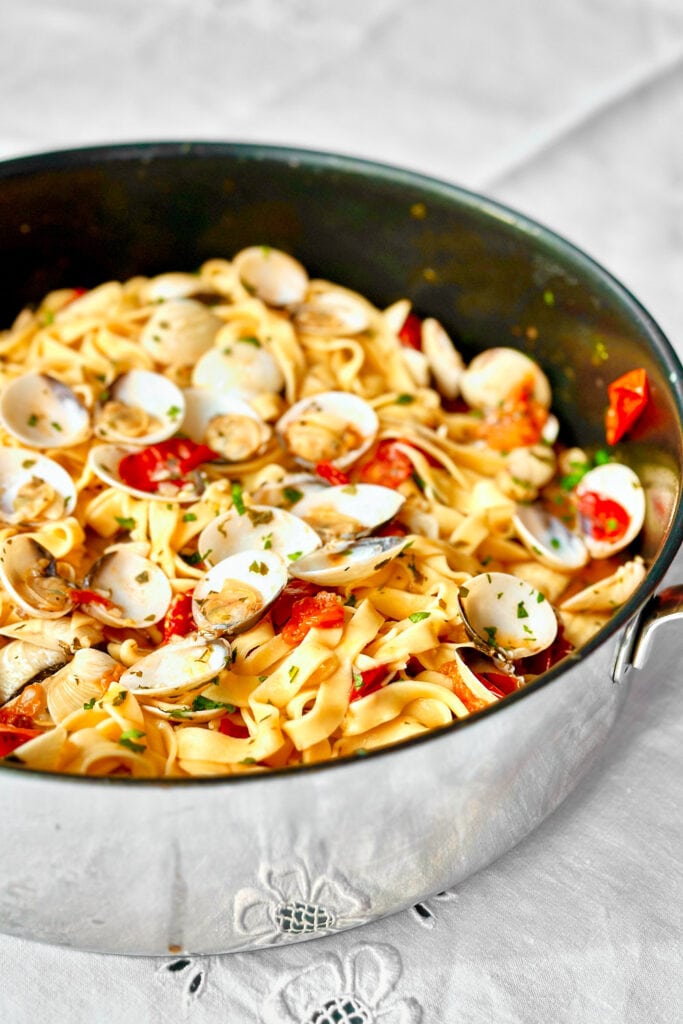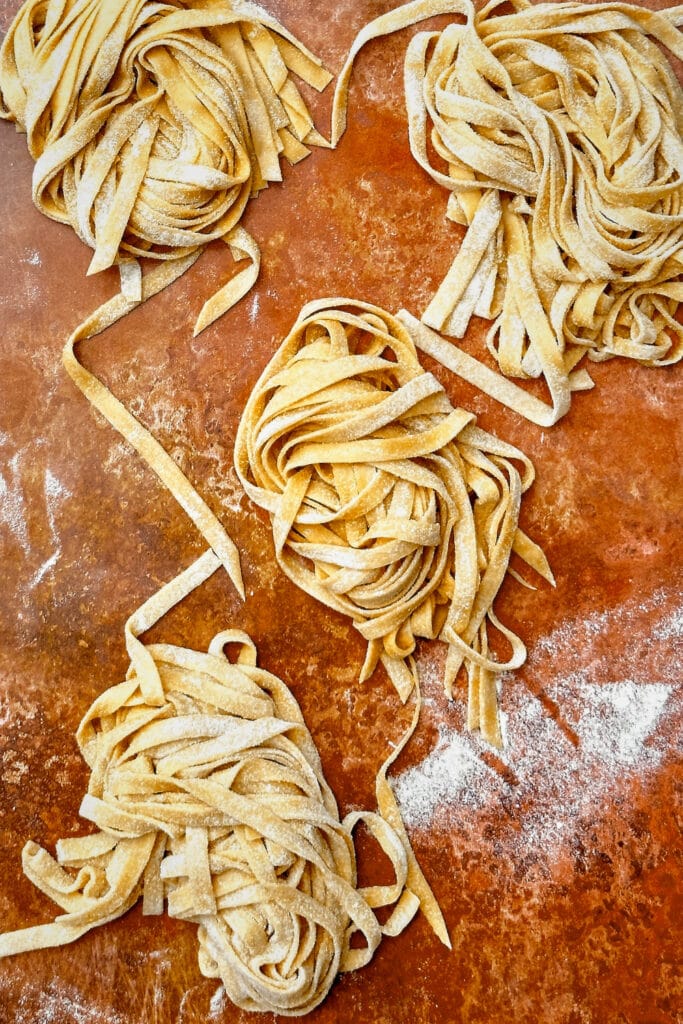How to Make Fresh Rigatoni
Learn how to make fresh rigatoni by hand. Rigatoni is a popular tube-shaped pasta type with ridges along the outside. The ridges help sauces and flavors to adhere to it, making it a popular choice for dishes with thicker or creamier sauces. These hand-rolled rigatoni are made with a classic Italian pasta dough, using eggs and a mix of soft wheat flour and semolina flour. The semolina flour makes the dough a little sturdier and gives the pasta enough structure to hold its shape.
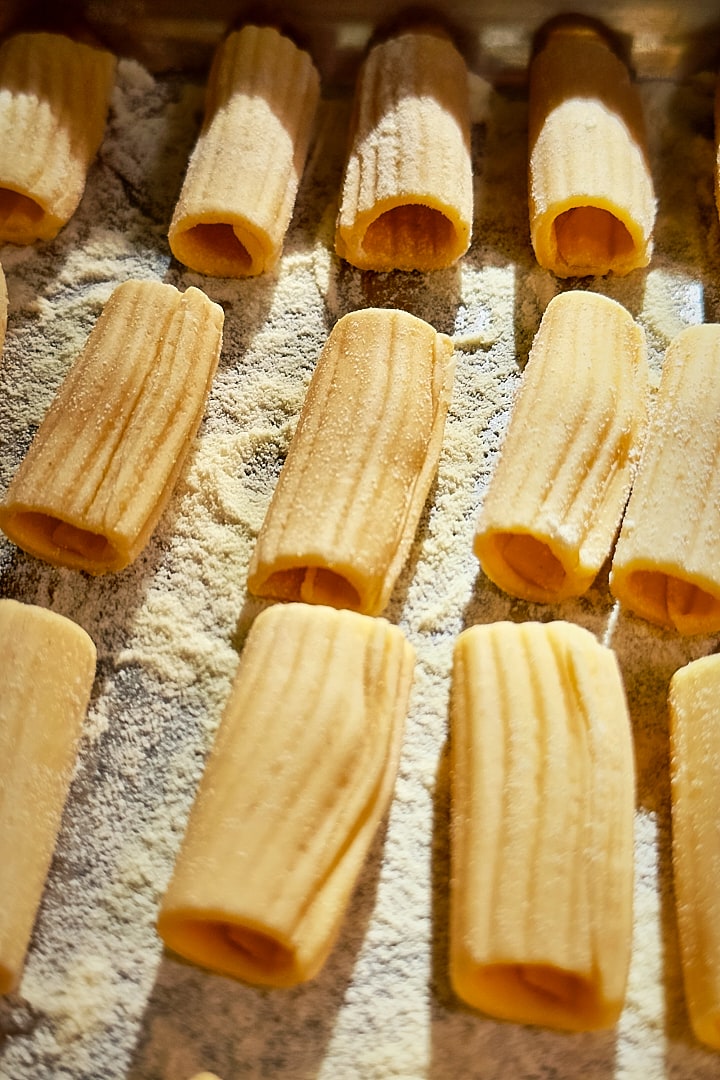
Ingredients and Tools You’ll Need
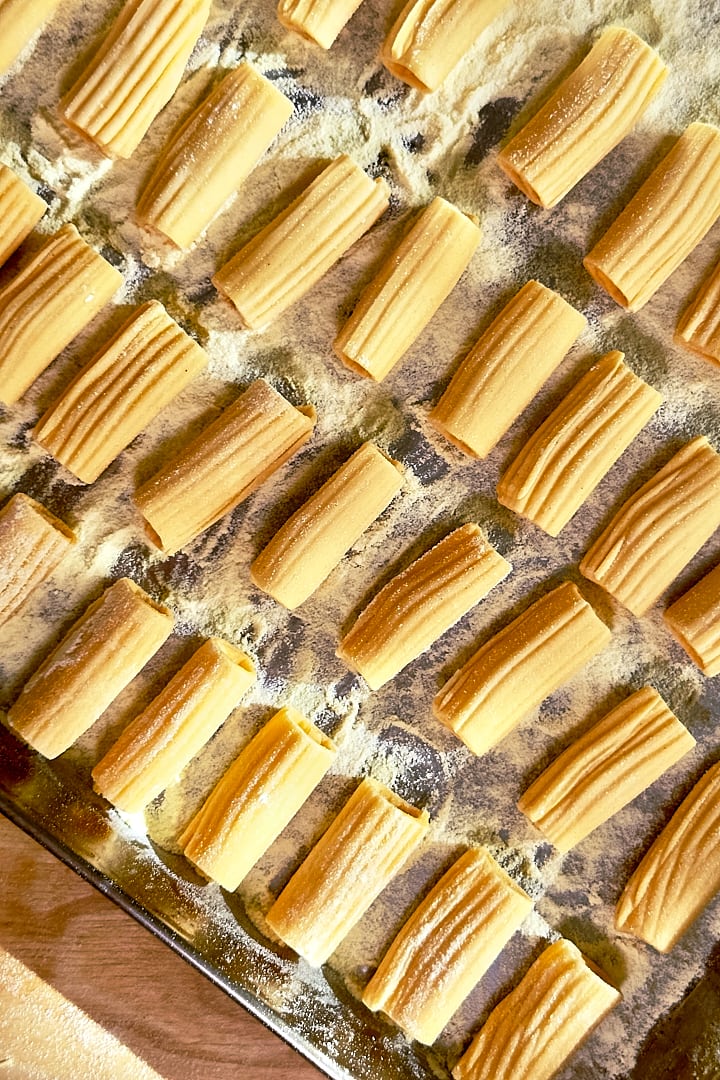
Step-by-Step Instructions
Step 1
Prepare one batch of fresh Italian pasta dough: Mix the flours and tip them onto your work surface. Use a little bowl to create a well in the center. Crack the eggs into the well and use a fork to break up the yolks. Then scramble the eggs and mix them with the flour in the center. Incorporate more and more flour from the edges until a thick paste forms in the middle. Then, use a bench scraper to incorporate the rest of the flour and bring everything together into a shaggy dough. Knead for at least 10 minutes until the dough feels smooth. Cover it with an inverted bowl or wrap it in cling film and let it rest for at least 30 minutes at room temperature.
Step 2
Cut off one quarter of the dough and keep the rest covered. Pass the dough through your pasta machine and roll it out into a pasta sheet. Rigatoni should be slightly thicker, so I recommend rolling to setting 4 or 5. At the final setting, pass the dough through twice. Cut the sheet into small 5 cm squares and stack them on top of each other. This prevents the dough from drying out too quickly while you are shaping the pasta.
Step 3
To shape the rigatoni, place the gnocchi board in front of you with the ridges in a horizontal orientation. The goal is to create lengthwise ridges along the outside of the pasta. Working with one piece at a time, take a dough square and place it on your gnocchi board. Roll the dough up over a wooden dowel to create the tube shape. Press the dowel down where the two edges of the dough overlap each other and create a seal with an even thickness. Then, roll the dowel away from you and across the gnocchi board to create the ridges. In the video below, you’ll see the full shaping process. Store the rigatoni on a semolina dusted baking tray. Repeat with the remaining dough.
Step 4
Let the rigatoni dry at room temperature for 1 -2 hours before cooking. This ensures that the tube shape stays intact and prevents the rigatoni from collapsing in the water. Cook the rigatoni in salted boiling water for about 3 minutes until al dente. Pair the pasta with a sauce of your choice and enjoy.
More Pasta Recipes You May Like:
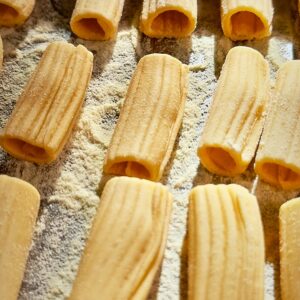
Fresh Rigatoni Recipe
Equipment
- Digital kitchen scale
- fork
- bench scraper
- Pasta machine or pasta roller attachment for stand mixer
- Sharp knife or pastry wheel – to cut the dough into squares
- Wooden pasta board – optional but recommended to make the dough
- Gnocchi board – to create the ridges on the outside
- Wooden dowel – or something similar like a pencil to create the tube shape
- Baking tray
Ingredients
- 120 g Soft wheat flour – Italian “Tipo 00” flour or all-purpose flour
- 80 g Semolina flour – finely milled durum wheat flour. It's called “semola rimacinata di grano duro” in Italy.
- 114 g Eggs – 2 medium-sized eggs
Instructions
- Prepare one batch of fresh pasta dough: Mix the flours and tip them onto your work surface. Use a little bowl to create a well in the center. Crack the eggs into the well and use a fork to break up the yolks. Scramble the eggs and mix them with the flour in the center. Incorporate more and more flour from the edges until a thick paste forms in the middle. Then, use a bench scraper to incorporate the rest of the flour and bring everything together into a shaggy dough. Knead the dough for at least 10 minutes until smooth and firm. Cover it with an inverted bowl or wrap it in cling film and let it rest for at least 30 minutes at room temperature.
- Cut off one quarter of the dough and keep the rest covered. Pass the dough through your pasta machine and roll it out into a pasta sheet. Rigatoni should be slightly thicker, so I recommend rolling until setting 4 or 5. At the final setting, pass the dough through twice. Cut the sheet into small 5 cm squares and stack them on top of each other. This prevents the dough from drying out too fast while you are shaping the pasta.
- To shape the rigatoni, place the gnocchi board in front of you with the ridges in a horizontal orientation. The goal is to create lengthwise ridges along the outside of the pasta. Working with one piece at a time, take a dough square and place it on your gnocchi board. Roll the dough up over a wooden dowel to create the tube shape. Press the dowel down where the two edges of the dough overlap each other and create a seal with an even thickness. Then roll the dowel away from you and across the gnocchi board to create the ridges. In the video below, you’ll see the full shaping process. Store the rigatoni on a semolina dusted baking tray. Repeat with the remaining dough.
- Let the rigatoni dry at room temperature for 1 -2 hours before cooking. This ensures to keep the tube shape intact and prevents the rigatoni from collapsing in the water. Cook the rigatoni in salted boiling water for about 3 minutes until al dente. Pair the pasta with a sauce of your choice and enjoy.


